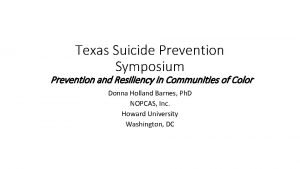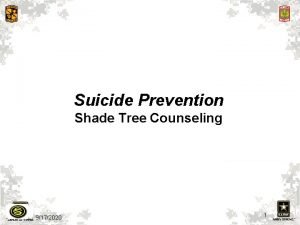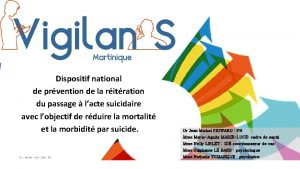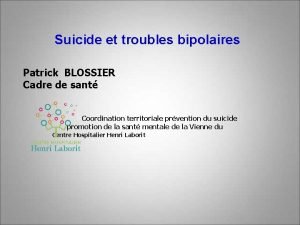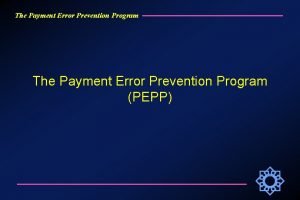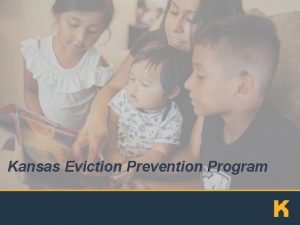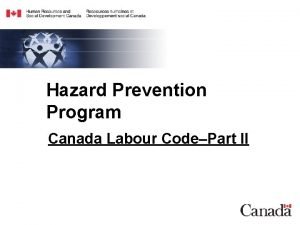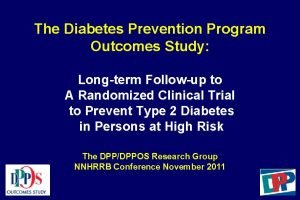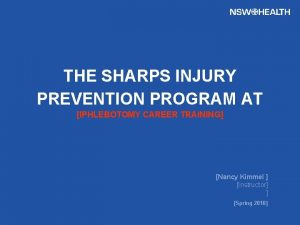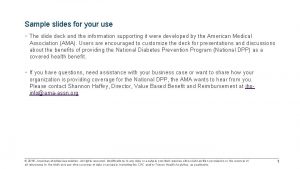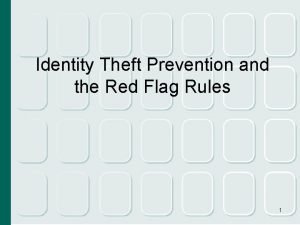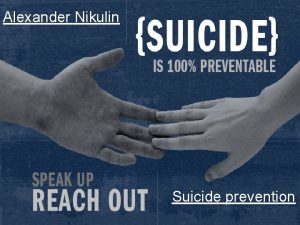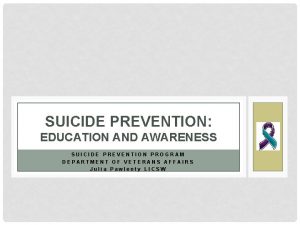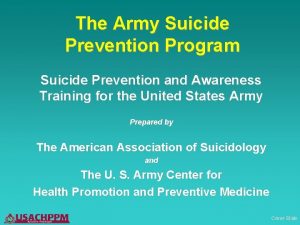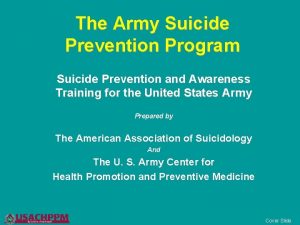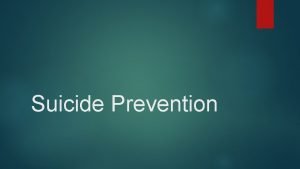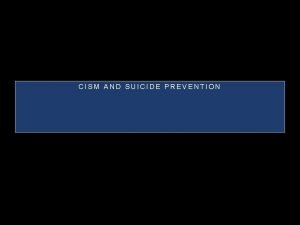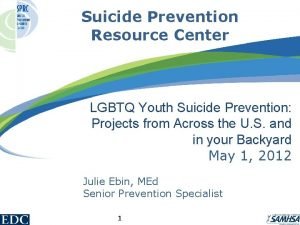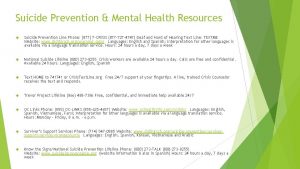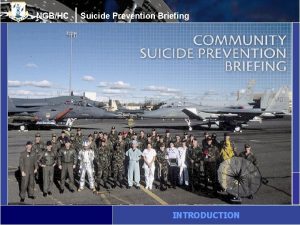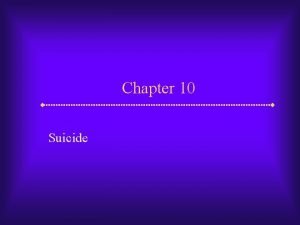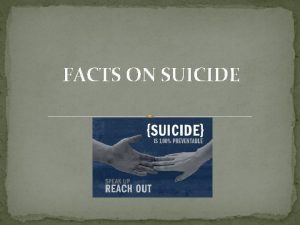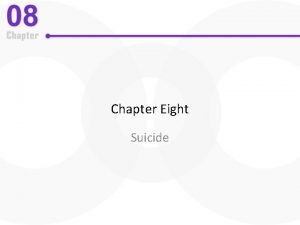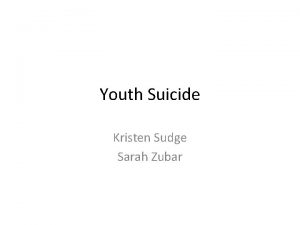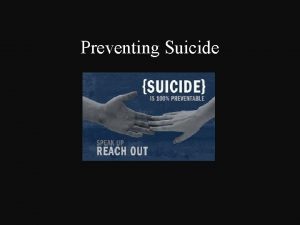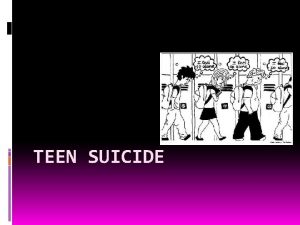Suicide Prevention Program Rochester Community Schools Rochester Community




















- Slides: 20

Suicide Prevention Program Rochester Community Schools

Rochester Community Schools Suicide Prevention Program “One young person contemplating suicide grips our hearts. Nine hundred thousand young people contemplating suicide grips our collective conscious. ” - Charles Curie, Administrator, Substance Abuse and Health Service Administration

Rochester Community Schools Suicide Prevention Program SOS (Signs of Suicide) Middle School Program • Goal of the program: Staff, students and parents will learn about depression and suicide and the action steps for students to take to get help. • Main message to students: ACT - Acknowledge, Care & Tell

Rochester Community Schools Suicide Prevention Program Statistics • Suicide is the third leading cause of death for those ages 10 to 24 • Adolescent suicide is deemed to be underreported because many deaths are inaccurately classified as unintentional or accidental. Source: “A Family Guide to Keeping Youth Mentally Healthy and Drug Free”.

Rochester Community Schools Suicide Prevention Program Question: WHAT PERCENTAGE OF STUDENTS REPORTED THAT THEY HAD SERIOUSLY THOUGHT ABOUT KILLING THEMSELVES?

Rochester Community Schools Suicide Prevention Program Answer: The Centers for Disease Control (CDC) 2003 Middle School Youth Risk Behavior Survey results indicate that across states: The percentage of students who reported that they had seriously thought about killing themselves, ranged from 18% of sixth graders to 28% of eighth graders.

Rochester Community Schools Suicide Prevention Program Question: WHAT PERCENTAGE OF STUDENTS REPORTED THAT THEY HAD MADE A PLAN ABOUT KILLING THEMSELVES?

Rochester Community Schools Suicide Prevention Program Answer: The Centers for Disease Control (CDC) 2003 Middle School Youth Risk Behavior Survey results indicate that across states: Eleven percent of sixth graders and up to 17% of eighth graders reported that they had made a plan about how to kill themselves.

Rochester Community Schools Suicide Prevention Program Question: WHAT PERCENTAGE OF STUDENTS REPORTED THAT THEY HAD TRIED KILLING THEMSELVES?

Rochester Community Schools Suicide Prevention Program Answer: The Centers for Disease Control (CDC) 2003 Middle School Youth Risk Behavior Survey results indicate that across states: The percentage of youth that reported that they had actually tried to kill themselves ranged from 7% among sixth graders to 11% of eighth graders.

Rochester Community Schools Suicide Prevention Program MYTHS ABOUT DEPRESSION AND SUICIDE MYTH: FACT: It’s normal for teens to be moody; they don’t suffer from “real” depression. Depression can affect people at any age. MYTH: FACT: Kids who talk about suicide won’t really do it. Almost everyone who dies by suicide has given some clue or warning. MYTH: FACT: If a person is determined to kill themselves, nothing is going to stop them. MYTH: FACT: Talking about suicide may give someone the idea. You don’t give a suicidal person morbid ideas by talking about suicide. The opposite is true. Discussing the subject openly is one the most helpful things you can do. There is no evidence that screening youth for suicide induces suicidal thinking or behavior. Even the most severely depressed person has mixed feelings about death, wavering until the very last moment between wanting to live and wanting to die. Most suicidal people do not want death; they want the pain to stop.

Rochester Community Schools Suicide Prevention Program SIGNS (SYMPTOMS) OF DEPRESSION • • • Frequent sadness, tearfulness, crying. Hopelessness Decreased interest in activities Persistent boredom; low energy Social isolation, poor communication Low self esteem and guilt Extreme sensitivity to rejection and failure Difficulty with relationships Frequent complaints of physical illness such as headaches and stomach aches Frequent absences from school or poor performance in school Poor concentration

Rochester Community Schools Suicide Prevention Program OTHER INDICATIONS OF DEPRESSION • • • Extreme anxiety, agitation or enraged behavior Excessive drug and/or alcohol use or abuse Neglect of physical health Major change in eating and /or sleeping patterns Talk of or efforts to run away from home Thoughts or expressions of suicide or self destructive behavior Source: AACAP, “The Depressed Child”.

Rochester Community Schools Suicide Prevention Program STAFF PROCEDURE WHEN APPROACHED BY STUDENTS ASKING FOR HELP • Information may be received 3 ways: direct, indirect-verbal, written 1. Direct: Bring the student to the Counseling (CNS) Office immediately 2. Indirect-Verbal: Bring the reporting student to the CNS Office immediately 3. Written: Contact Counselor immediately. • If a student reports directly, listen to what the student has to say, observe his or her demeanor and avoid making the student feel embarrassed or guilty. • Offer words of encouragement but do not promise confidentiality. Acting to prevent a potential suicide always overrides the need to honor confidentiality. • The appropriate person will immediately contact the student’s parent or guardian and police liason and work with them to make whatever referral is necessary.

Rochester Community Schools Suicide Prevention Program EDUCATING STUDENTS 6 TH grade: • Incorporate information in the anti-bullying curriculum (Conflict Resolution or 3 C’s). • Brief discussion about depression • Emphasize “tattling vs. telling”

Rochester Community Schools Suicide Prevention Program EDUCATING STUDENTS 7 th grade: • Video/discussion about depression and the signs of suicide. • Emphasis on ACT Acknowledge, Care & Tell • Student newsletter sent home. • One-two day presentation in Health classes.

Rochester Community Schools Suicide Prevention Program IMPORTANT INFORMATION FOR PARENTS Suicide Warning Signs • • Complaints of being a bad person Gives verbal hints such as, “I won’t be a problem for you much longer, ” “Nothing matters”, “It’s no use”, and “I won’t see you again”. Puts his/her affairs in order; for example, gives away favorite things, cleans his/her room, throws away important belongings etc… Becomes suddenly cheerful after a period of depression Shows signs of psychosis (hallucinations or bizarre thoughts) Shows little interest in the future Acts in rash, hostile ways; often expresses rage Experiences a stressful life event or loss TALK TO YOUR CHILD

Rochester Community Schools Suicide Prevention Program ADDITIONAL RISK FACTORS • • • Previous suicide attempt(s) Family history of suicide Exposure to suicidal behavior of others Easy access to lethal means, especially guns History of physical and/or sexual abuse Loss or interpersonal conflict

Rochester Community Schools Suicide Prevention Program PREVENTION AND PROTECTIVE FACTORS • • • Good relationships with family members Support from family Good social skills; confidence in ones self Seeking help when difficulty arise Seeking advice when important choices must be made Openness to other people’s experiences and solutions Openness to new knowledge Participation in sports, church associations, clubs and other social activities Good relationships with classmates Good relationships with teachers and other adults Support from relevant people

Rochester Community Schools Suicide Prevention Program IN CONCLUSION We hope to see the success of the program through healthier and better educated students and more prepared parents and staff when they are faced with symptoms of depression and suicide.
 Primary prevention secondary prevention tertiary prevention
Primary prevention secondary prevention tertiary prevention Mad acronym suicide prevention
Mad acronym suicide prevention Chapter 5 lesson 3 suicide prevention
Chapter 5 lesson 3 suicide prevention Suicide prevention chain teach
Suicide prevention chain teach Texas suicide prevention symposium
Texas suicide prevention symposium Suicide prevention sink
Suicide prevention sink Shadetree army
Shadetree army Prévention du suicide
Prévention du suicide Suicide prevention month quotes
Suicide prevention month quotes Army suicide prevention training
Army suicide prevention training Prévention suicide
Prévention suicide Huntsvillecs.powerschool.com
Huntsvillecs.powerschool.com Reach schools safety schools and
Reach schools safety schools and Payment error prevention program
Payment error prevention program Kansas eviction prevention program application
Kansas eviction prevention program application Codepast
Codepast Diabetes prevention program outcomes study
Diabetes prevention program outcomes study Needle stick injury
Needle stick injury Diabetes prevention program ppt
Diabetes prevention program ppt Identity theft prevention program
Identity theft prevention program Counterfeit parts prevention program as5553
Counterfeit parts prevention program as5553




